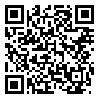BibTeX | RIS | EndNote | Medlars | ProCite | Reference Manager | RefWorks
Send citation to:
URL: http://yafte.lums.ac.ir/article-1-2468-en.html
Background: This study aimed to investigate the effect of eight weeks of interval training on gene expression of liver X receptors (LXR) in Wistar male rats.
Materials and Methods: In this study, 24 male wistar rats (200-250 g) were randomly used to three groups for this purpose, 24 male Wistar rats were prepared and divided into three groups: control (8 = n), high intensity intermittent exercise (8 = n) and continuous submaximal exercise (8 = n), respectively. The treadmill exercise program was performed for eight weeks, three days a week for 40 minutes. High intense exercise protocol, 30 minutes running periodic (every period of four minutes and two minutes running with 90-85% of VO2 max intensity active recovery with 60-50% of VO2 max) three days a week for eight weeks. Also, the continuous training group under maximum was an exercise intensity equivalent to 50 to 55 percent of maximum oxygen consumption of the mice.
Results: The results showed that there was a significant difference between the four groups in the gene expression level, after data analysis and test research hypotheses, findings of this study show that the expression of LXR alpha gene, apolipoprotein 1, ABCG1 a significant increase in intensity interval exercise than the control group (p = 0.004). The results also showed a significant difference between the three groups in the expression of LXR beta and apolipoprotein 2, SR-BI does not exist. Although the results showed a slight increase in groups of periodic training and continuing slight increase, but this has not led to a significant difference.
Conclusion: Overall results indicated the superiority of intense interval training than submaximal exercise in reverse cholesterol transport is continuous. Intense interval training by increasing hepatic expression of the receptor gene as well as the main cause of the liver and eventually out HDL receptors can play an important role in reducing cardiovascular diseases such as atherosclerosis.
Received: 2017/06/5 | Accepted: 2017/12/18 | Published: 2017/12/18
| Rights and permissions | |
 |
This work is licensed under a Creative Commons Attribution-NonCommercial 4.0 International License. |





